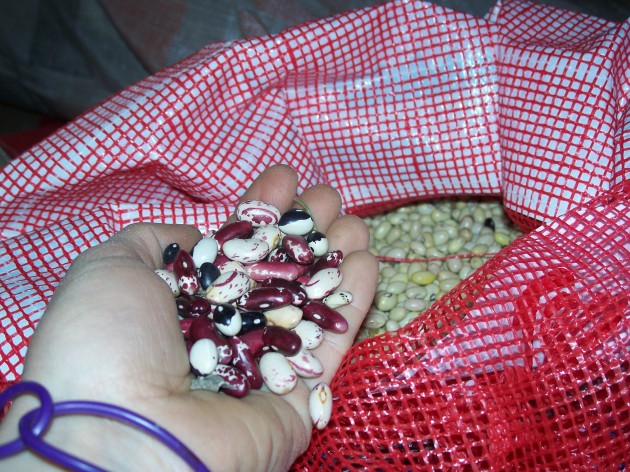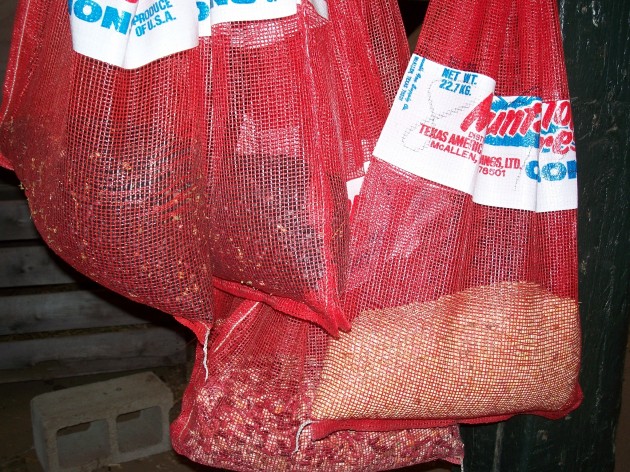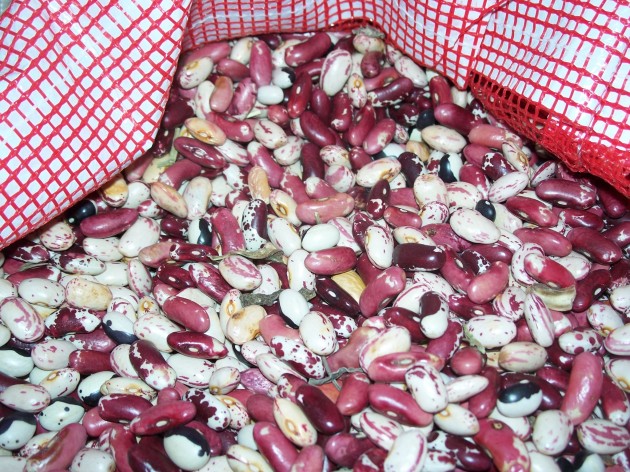
Photos: Courtesy of Powisset Farm
In this month’s post from Powisset Farm, Meryl LaTronica takes us on an epic journey. She hints at economies of scale, the labor involved and the time invested in producing one of the most important sources of plant-based protein out there: legumes.
Meryl LaTronica
Farm Manager, Powisset Farm
At Powisset Farm we raise our own pigs, we bring in eggs from Brambly Farms in Norfolk and we sell grass-fed beef from our fellow Trustees’ Farm, Appleton Farms, in Ipswich, MA. But what about growing a protein that is not derived from animals? What about beans? Why is it that we grow 65 different crops on the farm, but we omit growing some of the basic staples of our diet, grains and beans?
Well, for starters, you need a lot of space to grow enough grains and beans to feed all 300 people in our CSA, and the dollar value of those crops are not nearly what they are if we chose to grow the same amount of arugula or tomatoes.
And secondly, processing beans and grains is quite an expedition. Let me take you on the journey of the dry beans at Powisset Farm.
It all started when my co-worker Molly brought out the seed catalogs last winter to show me all the beautiful varieties of beans we could be growing. The beans looked hand painted, swirling pinks and whites, and black and tan beans that you just don’t find at the markets near my house. She picked out a mix of varieties that we thought would thrive in our climate: Black Turtle, a classic small black bean; Calypso, oval beans that are half black and white with Pollack-like splatters of black color; Jacob’s Cattle, an old variety great for baked beans, white with maroon splashes; and Hutterite, an heirloom variety, traditionally grown in northern climates, similar to the black-eyed-peas but with a light-green hue.
We planted the beans into our fields in mid-June of 2010, sowing about 1200 row feet all together. We cultivated them and hand-weeded them, but never gave them much water. With the drought of last summer, we were worried about how they would perform. Sometime in October, after somewhat ignoring them for most of the season, we found our way back to the beans. There they were, mostly dry and brown, but their pods were filled with beautiful beans. In the cool fall, we harvested the brown, dry plants into bunches and spread them out to dry in the upper floor of our barn.
Fast forward to last week— a full six months after we harvested the beans.
We pulled them down from the loft and began to process them. Using thirty-gallon buckets, we threshed the beans by banging them from side to side inside the bucket. After that we poured the beans into a basket with holes large enough to fall through, but small enough so that all plant material would be sifted out. Then we poured those beans into small mesh bags and sifted out even more small leaves from the beans.
 Our final step was then to pour the beans on our wash tables and sift through the beans, by hand, to pick out any stones or rotten beans.
Our final step was then to pour the beans on our wash tables and sift through the beans, by hand, to pick out any stones or rotten beans.
 Phew! Ten months after we planted them, we finally made our way to about 70 pounds of dry beans. And this year we will be growing twice as much!
Phew! Ten months after we planted them, we finally made our way to about 70 pounds of dry beans. And this year we will be growing twice as much!
